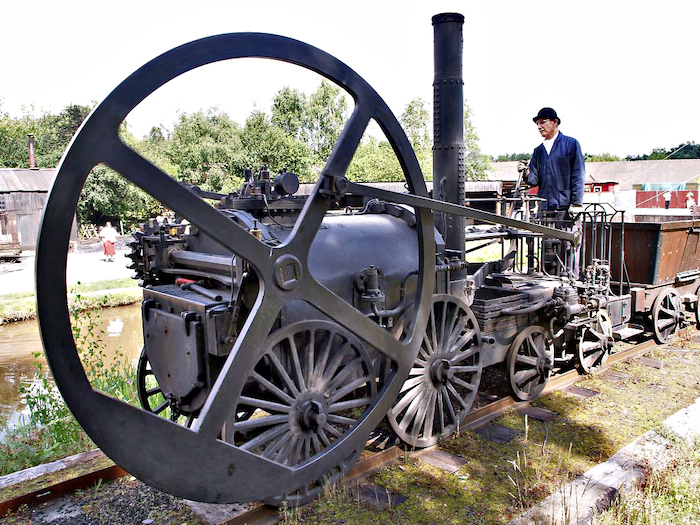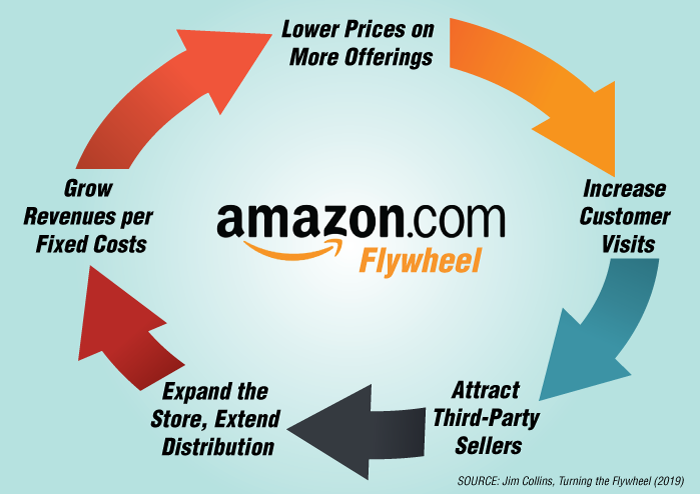Familiar to entire farm equipment business, the flywheel example illustrates how alignment can get your business humming.

Continuously feeding the flywheel can get an organization to a place of nearly unstoppable momentum, says business author Jim Collins.
In the troughs like we’ve faced in ag machinery lately, it isn’t difficult to find a motivation to uncover ways to refine our organizations. It also maintains faith and confidence as we choose to work on what we can indeed control.
I was among those who placed my pre-order for Jim Collins’ newest “monograph” as he calls it, Turning the Flywheel. Collins is one of my favorite business authors, and with the familiar machinery symbol and analogy, I figured you and I might enjoy a head start on understanding this principle, which earned a brief mention in Good to Great.
Turning the Flywheel arrived at my house last week and went right into my carry-on bag last Wednesday. I read the full 37 pages on a 90-minute flight last week, and immediately put in an Amazon order for copies for our entire leadership team. It is a quick read; it took more time to type this column today (on another flight) than it did to read the book. (By the way, the summary concepts in the Appendix is worth your $10 alone.)
Through case studies of several businesses (and even a Kansas public school), Collins shows how a focused pursuit illustrated via a flywheel can lead to momentum and sustainable gain for any enterprise. Take the opportunity to let your tech show you a flywheel in his work bay and explain how it functions. Then, think of a giant heavy flywheel and for just a moment, the 5 or 6 spokes that “cycle” and power your business.

Flywheel, 1802 Steam Locomotive
Think about the flywheel moving an inch, then a full turn and on to where it’s moving faster and forward “with almost unstoppable momentum,” he writes.
The author’s sketch on Amazon’s lifecycle is shown below. He says the best flywheels identify components that are the “inevitable consequence of the step that came before.” Again, after a company nails the first component and the next, it’s a chain reaction that’s self-energizing, and to some extent, self-delivering.
My scribbling on the Delta napkins includes lists of words that could be used on a farm equipment flywheel, as well as for our own B2B media company. But I’m sitting on them here because that’s an exercise you’ll do with your leadership team. That’s what we’re doing with our purchased copies, with a discussion to come at our next EOS quarterly meeting. Collins’ book will reveal some thought-provoking questions about past successes and failures and what your differentiating components are, or are not.

Turning the Flywheel included several “flywheel” sketches for several companies, including Amazon. “Feed any part of the flywheel, and it should accelerate the loop,” wrote Brad Stone, who described Amazon’s application of the flywheel model as its “secret sauce.”
Collins also prepares you for the debate that will come as you fabricate your own unique flywheel. He stresses that the outcome must be more than a static list drawn in a circle. “It must capture the sequence that ignites and accelerates momentum.”
Something that spoke to me — and differently than the the usual “weakest link in the chain” cliché — was the enterprise-wide loss of just one struggling component. All other components of your business could be firing on their highest level, but when any one falters, the rest of the business sputters to that same slowest speed. Only after that problem is restored can momentum start up again. It calls for accountability factors and just as important, the “all-hands-on deck” fixing of a suffering area.
For the skeptics, Collins cites several examples in which well-crafted flywheel models don’t get dismissed or changed -- even amidst extreme industry disruption (Intel) or financial crisis (Vanguard). With the right flywheel and the right language and intent, it needn’t change. In fact, in times of doubt or distraction, the best path is to feed the flywheel with relentless intensity. As the Collins conveys, good decisions build and compound on the previous work to get closer to “greatness.”
What are your takeaways from Collins’ work and how the flywheel can be applied to the farm equipment business? Let me know, and I’ll share what we discover in kind. Use the comment form below or mlessiter@lessitermedia.com







